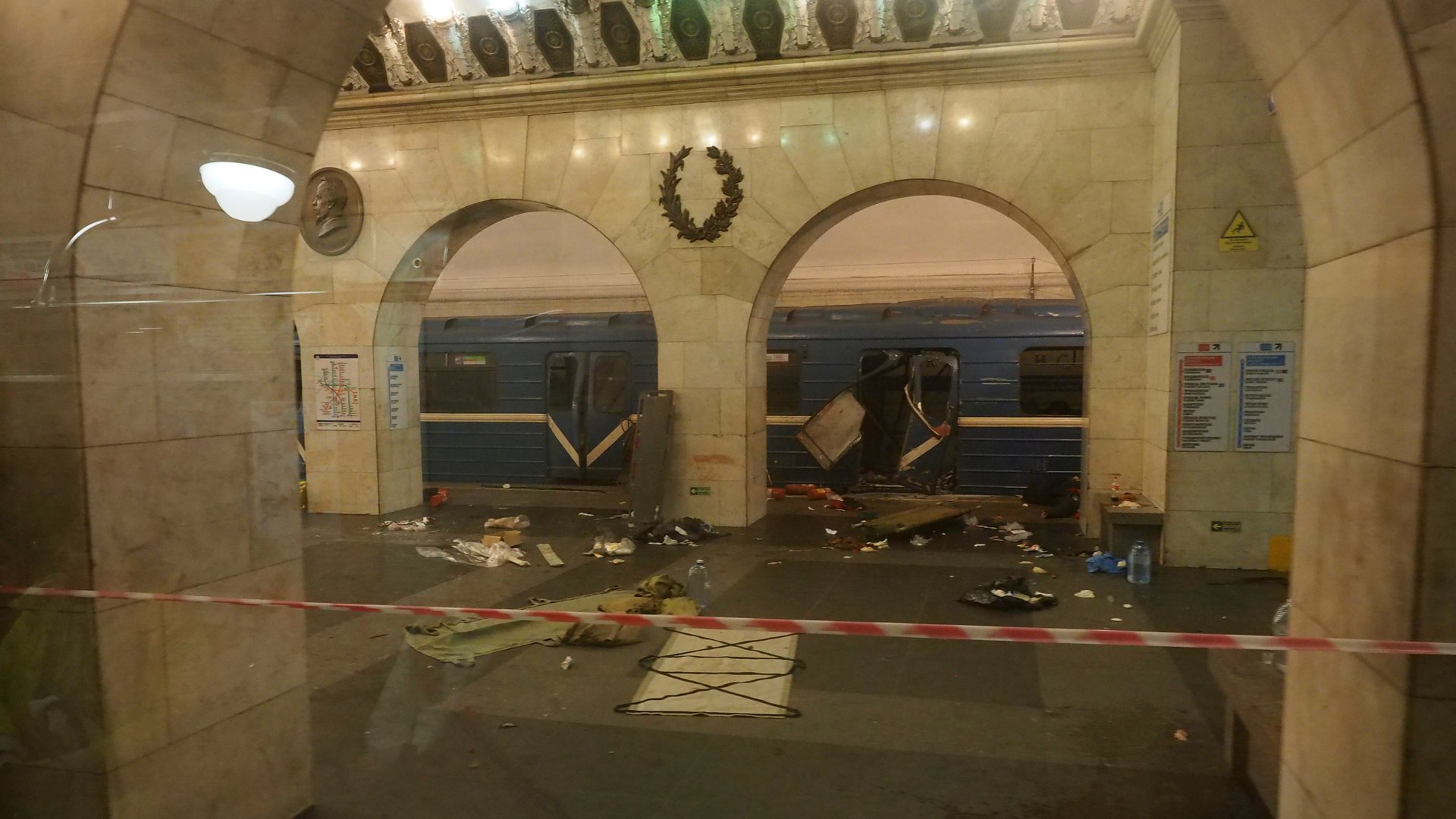What makes mass transit so great is exactly what makes it so vulnerable to attack
Commuters around the world would be understandably rattled by the deadly blast by a homemade device on a subway car in St. Petersburg, Russia.


Commuters around the world would be understandably rattled by the deadly blast by a homemade device on a subway car in St. Petersburg, Russia.
Statistically rare, terror attacks on public transportation—such as the March 2004 train bombings at Madrid’s Atocha station, the July 2005 attack on the Underground and a double-decker bus in London, the July 2006 bombing of commuter trains in Mumbai, and more recently, the attack on the Maelbeek train station in Brussels in 2016—are designed to instill widespread fear. Monday’s blast in St. Petersburg yet again exposed the security risks in what is a largely unavoidable routine for tens of millions.
A trip on the subway or bus bookends the workday for commuters. People of varying income levels and from far-flung neighborhoods must share a cramped space, for at least few minutes, so they can get to work and back home. Public-transportation systems are great equalizers that stitch cities together.
But law enforcement and security services continue to struggle with how to keep these vital public lifelines safe. Subways and commuter trains are particularly exposed. Unlike more heavily guarded transport hubs like airports, big mass transit systems have dozens of stops, each of which has multiple entrances, along with trains with multiple cars and entrances of their own.
The ideal defense would be to thwart attacks before they occur, by intercepting intelligence about terror plans. But Monday’s attack is a reminder of a dilemma facing city and national governments: Do they step up passenger checks in mass-transit systems, in a process that makes stations look more like airports? That would be expensive and time-consuming, thus defeating the main purpose of mass-transit systems—to quickly and efficiently move large numbers of people.
“You clearly have to keep these systems functioning,” Henry Willis, a senior policy researcher at Rand Corp, told Quartz.
The challenge is part of a bigger struggle to keep public spaces safe. These areas have significant blind spots, which also include the parts of airports that can be freely accessed before reaching a security checkpoints.
Some US lawmakers last year suggested installing airport-like checkpoints at Amtrak stations, but such a setup would cripple vast and complex subways if it were extended to intracity transit systems. Installing such devices like metal detectors would present similar problems, especially in overcrowded systems. The UK has tried to beef up undercover police presence. Israel, no stranger to terror attacks, has protective barriers near bus-boarding areas and is experimenting with tiny explosives-detection devices designed to find bombs at a distance.